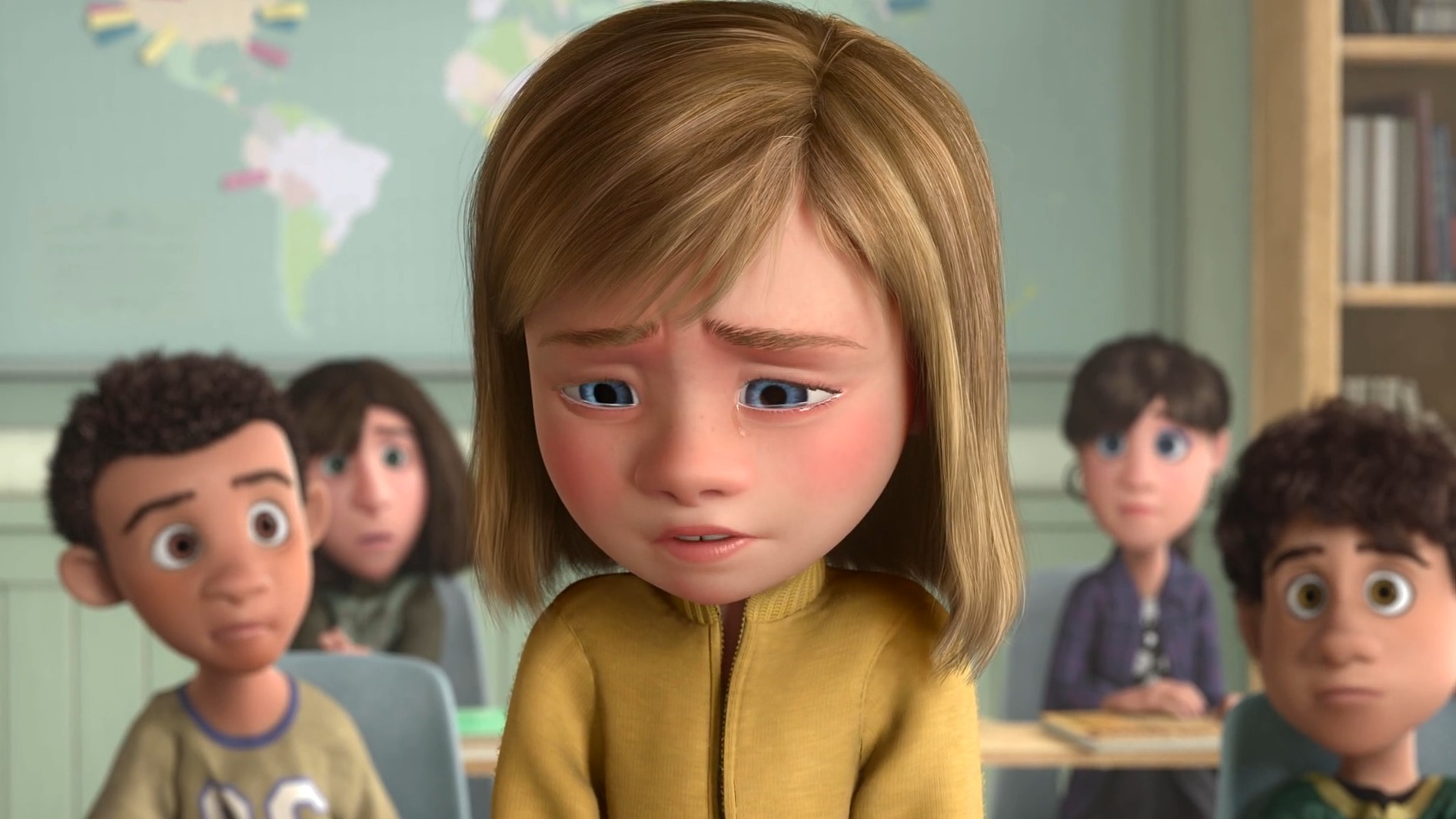The movie Inside Out sheds new light on the importance of grief, exploring why it’s important to express emotions openly in a society that often suppresses them and what positive changes we can expect from it.
I’ve never been a fan of animation, but I mustered up the courage to go to the movie theater to watch Inside Out on my own after my friends highly recommended it. When I entered the movie theater, I was expecting a large audience of children, but instead, there were many adults like me. The movie started with the excitement of watching an anime for the first time in a long time.
The movie Inside Out tells the story of Riley, a teenage girl in the United States. The most unique thing about the movie is the way it shows the inside of the human mind. There are five emotions that exist in Riley’s head. The movie starts off with Joy, followed by Sadness, Timidness, Bratty, and Bratty. These five emotions are used to represent Riley’s feelings as he grabs the control tower depending on the situation. Each time he grabs the control tower, each emotion triggers a memory ball with a color that corresponds to that emotion. When Riley falls asleep, these beads are sent to long-term memory storage and delivered to the Control Tower when needed. In this way, Inside Out effectively expresses human emotions and memories through animation, which resonated with many viewers. As I watched the movie, I realized that my emotions could manifest themselves in the same way. For example, in the moments when I forgot what had just happened and felt new emotions, I wondered, “Is it possible that other emotions inside me are starting to control me?” and I felt that this movie could be the answer. In a small way, the feeling of freezing one’s head while eating ice cream was represented by the instantaneous freezing of emotions, which made the audience laugh.
The majority of the film’s plot follows Sadness’s strange behavior, the subsequent disappearance of Joy and Sadness, and her journey back to the control tower. The movie emphasizes the importance of sadness as well as the understanding and expression of human emotions in the plot. Sadness’ strange behavior begins when Riley abruptly moves from Minnesota to San Francisco. Much to Joy’s displeasure, Sadness faces a new environment, replacing non-sad memories with sad ones, and spiraling out of control. Eventually, Sadness and Joy leave the control tower and go missing when Sadness develops a sad core memory. In the process, Riley loses the ability to feel the emotions of sadness and joy and becomes confused. Other emotions try to take over Joy’s role, but they fail, and Riley runs away, unable to cope with the ups and downs of her emotions. At first, Joy tries to fix Riley’s confusion with Sadness, but as they go through the disappearance together, Joy realizes that there are sad memories behind the happy ones. Joy realizes that it’s abnormal to have only happy memories, so she helps Sadness solve Riley’s runaway. The core happy memories are mixed with sadness to create a new complex of emotions, and Riley cries. This is the moment when Sadie’s statement from earlier in the story, “Crying helps you calm down and not get too caught up in life’s problems,” comes to life. From then on, Riley grows further as new core memories are created that incorporate multiple emotions.

As I watched the movie, I saw Sadie’s strange behavior in the beginning and thought that the emotion of sadness would only get in the way. It’s an idea that has been in my life for a long time. I’ve always thought that being sad doesn’t help solve problems, and when I’m sad, I just try to get out of it as quickly as possible. But after watching the movie and learning about the role of grief, I felt like I’d been slapped in the face. It made me question how much we really grieve and how much we share as a society. In my own experience, the last time I remember crying out loud or sharing my sadness with others was in adolescence, around the age of 12. It was difficult for a grown person to “show their emotions by shedding tears” at school, at home, or among friends, so as I moved through adolescence and into adulthood, hiding my emotions became second nature.
Isn’t the biggest difference between adolescence and beyond the difference in competition? Looking back on my own experience, before high school, I had fewer restrictions on sharing my emotions because it was a time of growing together rather than being extremely competitive with others. It wasn’t a problem to openly express your feelings to others. However, after entering the competitive world in high school, I felt that showing my emotions became a weakness that would make me fall behind in the competition. From this experience, I believe that there are many people in our highly competitive society who are unable to show their emotions well. That’s why I think adults in Korean society could relate to Inside Out, a movie that reminds us to think about our emotions, more than children.

Korean society is becoming an increasingly uncomfortable place to show emotions. The Sewol ferry disaster that occurred on April 16, 2014 shocked and angered the entire nation. The entire nation was overwhelmed with grief and expressed their condolences, but it wasn’t long before there were claims that ‘grief should not be forced’. I think this is an example of how our society has become less empathetic. In a society that does not empathize with other people’s situations, it is not easy for an individual or a group to show emotions, and the negative effects are not small. This is also confirmed by research papers. According to Professor Hongjin Jeon’s research, when comparing Koreans and Americans, Koreans tend to have lower depression scores than Americans, while Americans tend to have higher quality of life scores. In addition, Koreans have more symptoms of depression than Americans. This suggests that Koreans are less likely to express their depression, which could mean that they view depression more negatively than Americans and consider it something to hide. Furthermore, according to the latest statistics from 2023, South Korea has the highest suicide rate among OECD countries, at around 23.6 per 100,000 people. Despite the high prevalence of depression and other mental distress in South Korea, mental health is still highly stigmatized and access to treatment is limited, which often prevents people from seeking appropriate help.
In addition, compared to the past, Korean society’s communication is heavily skewed toward the positive and excludes emotions such as sadness. Globally, communication in modern society has shifted from mass media to short and fast, such as social media. The increase in communication through SNS has provided the advantage of allowing various people in society to communicate together in a short time, but it also has the disadvantage of excluding negative emotions. For example, the “like” button on Facebook and Instagram. In social media, people tend to be conscious of what others think of them and only share their happiness. As a result, we may feel that we are sharing a lot of positive emotions, but the question arises as to whether it is truly communication. This goes beyond mere communication and raises the question of whether we are empathizing together. I think the answer to this question is something we all need to think about together.
In this sense, Inside Out is not just an animation, but a meaningful work that allows us to reflect on the problems of our society together. It rethinks the role of sadness and reminds us that showing emotions is not something to be ashamed of or uncomfortable with, but rather emphasizes that honest emotional expression is an important factor in maintaining a healthy life. We hope that this movie will inspire not only children, but also adults in our society to examine their emotions and accept and express all emotions, including sadness, as they are.